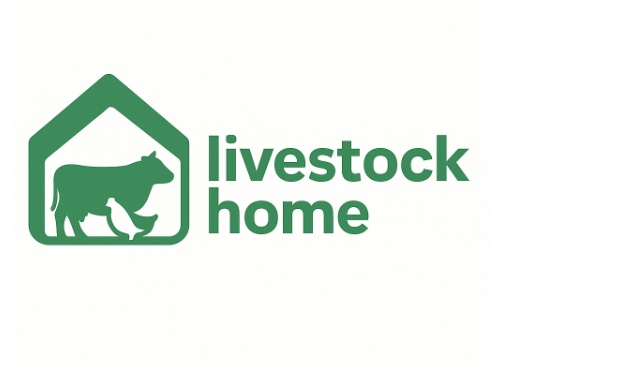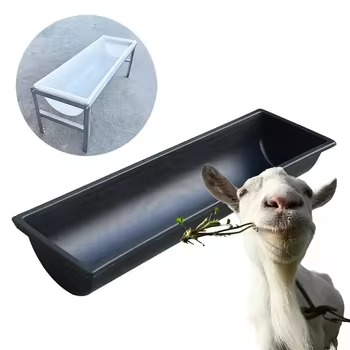Cattle Farm
How to Profit from a Cattle Farm? A Practical Guide for Beginners and Experts
As of October 2025, cattle farming is experiencing a golden era. With U.S. cattle inventory at its lowest since 1951, driving average steer prices to $3.30-$3.40 per pound, opportunities for profit are at an all-time high. However, turning a profit requires smart management, cost control, and market savvy. This blog uses an FAQ (Frequently Asked Questions) and solutions framework to break down the essentials of cattle farm profitability. Whether you're a newbie or a seasoned farmer, these insights—backed by 2025 agricultural data and expert advice—will set you on the right path.
FAQ: Common Questions About Cattle Farm Profitability
Here are the most common questions cattle farmers ask, answered with data from 2025 agricultural reports and practitioner insights.
What are the main sources of cattle farm profit?
- Profits come from beef sales, dairy products, calf breeding, and byproducts like organic fertilizer. In 2025, cow-calf operations boast a 73% profit margin, with many farmers reporting consistent gains over the past five years. For example, a steer raised from 220kg to 700kg in 300 days can yield significant returns.
- Will cattle prices keep rising in 2025?
- Yes, due to low inventory (projected at 86 million head) and strong demand, prices will remain near record highs. Futures suggest fall heavy feeder cattle prices around $287/cwt, though volatility requires monitoring consumer confidence (currently 50.8).
- Can a small-scale cattle farm be profitable?
- Yes, starting with 10 cows and using public land for free grazing works. For instance, 27 acres supporting 11 cows can yield "crazy profits" with self-produced feed and efficient management. Larger operations (e.g., 1,500 head) with two full-time staff report stable annual profits.
- How does feed cost impact profitability?
- Feed accounts for 60% of costs, but 2025’s low grain prices (e.g., corn) will support profits into 2026. Rotational grazing can reduce off-farm feed expenses.
- Do government subsidies help profitability?
- Yes, 2025 farm income is expected to rise due to high cattle prices and one-time government payments. Long-term success, however, relies on strategy, not just subsidies.
- How do I handle market volatility?
- Use futures hedging and diversification (e.g., dairy-beef combo) to mitigate risks. 2025 export growth (e.g., $6.2 billion pork surplus) can offset domestic fluctuations.
- Is organic or sustainable farming more profitable?
- Yes, value-added products like organic cheese can boost margins by 15-20%. Manure compost sales add another 10-20%.
- How much investment does a startup cattle farm need?
- Initial capital is around $2 million for land and equipment, but starting small offers high returns. Avoid over-investing in cull cows.
- What are the key risks to cattle farm profitability?
- Diseases, droughts, and tariffs (e.g., 32% drop in exports to China) pose challenges. Prevention includes vaccines and biosecurity.
- How do I assess my cattle farm’s profit potential?
- Use tools like FEEDER METER for a 180-day profit forecast, factoring in current market prices. Top states like Texas (4.36 million head) provide a benchmark.
Solutions: Practical Strategies to Boost Cattle Farm Profits
Based on the FAQ, here are 10 actionable solutions, informed by 2025 trends and shared by farmers on X. These strategies emphasize sustainability and efficiency to maximize your returns.uide for Beginners and Experts
As of October 2025, cattle farming is experiencing a golden era. With U.S. cattle inventory at its lowest since 1951, driving average steer prices to $3.30-$3.40 per pound, opportunities for profit are at an all-time high. However, turning a profit requires smart management, cost control, and market savvy. This blog uses an FAQ (Frequently Asked Questions) and solutions framework to break down the essentials of cattle farm profitability. Whether you're a newbie or a seasoned farmer, these insights—backed by 2025 agricultural data and expert advice—will set you on the right path.
FAQ: Common Questions About Cattle Farm Profitability
Here are the most common questions cattle farmers ask, answered with data from 2025 agricultural reports and practitioner insights.
1. What are the main sources of cattle farm profit?
Profits come from beef sales, dairy products, calf breeding, and byproducts like organic fertilizer. In 2025, cow-calf operations boast a 73% profit margin, with many farmers reporting consistent gains over the past five years. For example, a steer raised from 220kg to 700kg in 300 days can yield significant returns.
2. Will cattle prices keep rising in 2025?
Yes, due to low inventory (projected at 86 million head) and strong demand, prices will remain near record highs. Futures suggest fall heavy feeder cattle prices around $287/cwt, though volatility requires monitoring consumer confidence (currently 50.8).
3. Can a small-scale cattle farm be profitable?
Yes, starting with 10 cows and using public land for free grazing works. For instance, 27 acres supporting 11 cows can yield "crazy profits" with self-produced feed and efficient management. Larger operations (e.g., 1,500 head) with two full-time staff report stable annual profits.
4. How does feed cost impact profitability?
Feed accounts for 60% of costs, but 2025’s low grain prices (e.g., corn) will support profits into 2026. Rotational grazing can reduce off-farm feed expenses.
5. Do government subsidies help profitability?
Yes, 2025 farm income is expected to rise due to high cattle prices and one-time government payments. Long-term success, however, relies on strategy, not just subsidies.
6. How do I handle market volatility?
Use futures hedging and diversification (e.g., dairy-beef combo) to mitigate risks. 2025 export growth (e.g., $6.2 billion pork surplus) can offset domestic fluctuations.
7. Is organic or sustainable farming more profitable?
Yes, value-added products like organic cheese can boost margins by 15-20%. Manure compost sales add another 10-20%.
8. How much investment does a startup cattle farm need?
Initial capital is around $2 million for land and equipment, but starting small offers high returns. Avoid over-investing in cull cows.
9. What are the key risks to cattle farm profitability?
Diseases, droughts, and tariffs (e.g., 32% drop in exports to China) pose challenges. Prevention includes vaccines and biosecurity.
10. How do I assess my cattle farm’s profit potential?
Use tools like FEEDER METER for a 180-day profit forecast, factoring in current market prices. Top states like Texas (4.36 million head) provide a benchmark.
Solutions: Practical Strategies to Boost Cattle Farm Profits
Based on the FAQ, here are 10 actionable solutions, informed by 2025 trends and shared by farmers on X. These strategies emphasize sustainability and efficiency to maximize your returns.
| Strategy | Details | Expected Benefits |
|---|---|---|
| 1. Optimize Breed Selection | Choose breeds suited to local climates, like Holstein (dairy) or Angus (beef). Avoid low-quality bulls. | 20% higher output, reduced disease loss. |
| 2. Control Feed Costs | Grow your own corn or alfalfa, use rotational grazing (2-5 acres per cow). | 10-15% annual savings, leveraging low grain prices. |
| 3. Manage Health | Regular vaccines, parasite control, and vet partnerships. | 10% lower mortality, improved welfare. |
| 4. Time Finishing and Sales | Buy low, finish in 6-12 months, use cull cow weight gain. | $500-$1,000 profit per head. |
| 5. Add Value | Process dairy or sell manure fertilizer ($300/ton). | 10-20% extra revenue. |
| 6. Scale with Technology | Start small, use electric fencing and monitoring systems. | $100,000+ annual profit for small farms, doubled efficiency. |
| 7. Market Effectively | Join co-ops, sell organic products direct. | 15% premium, stable channels. |
| 8. Manage Herd and Breeding | Track pregnancy rates, avoid over-retaining cows. | Higher calf yield, supports expansion. |
| 9. Adopt Sustainable Practices | Irrigate during dry seasons, time market entry. | Higher prices at sale, lower risk. |
| 10. Track Finances | Monitor budgets, apply for subsidies. | Clear profit analysis, reduced waste. |
Conclusion: Step Toward Sustainable Profits
Cattle farm profitability in 2025 hinges on leveraging tight supply and robust demand. The FAQ addresses your concerns, while these solutions turn challenges into opportunities. Successful farmers, as shared on X, emphasize patience, planning, and innovation. If you have specific farm details, leave a comment, and I can tailor further advice. Start your profitable journey today!
 Pig Farm
Pig Farm




